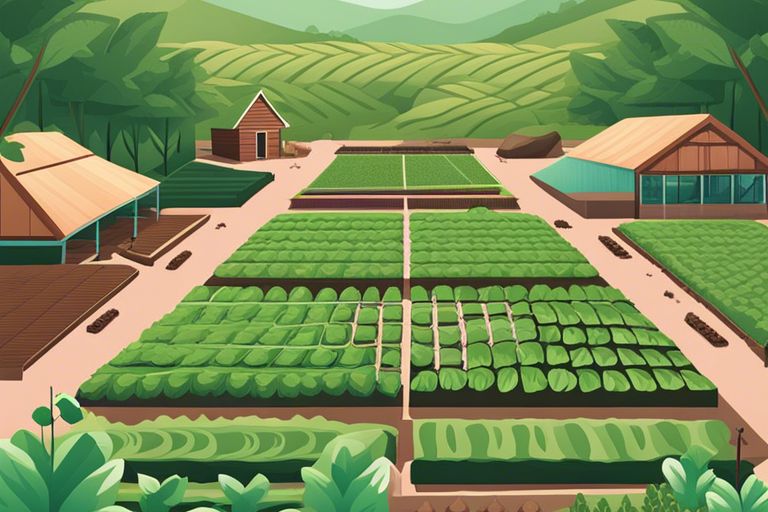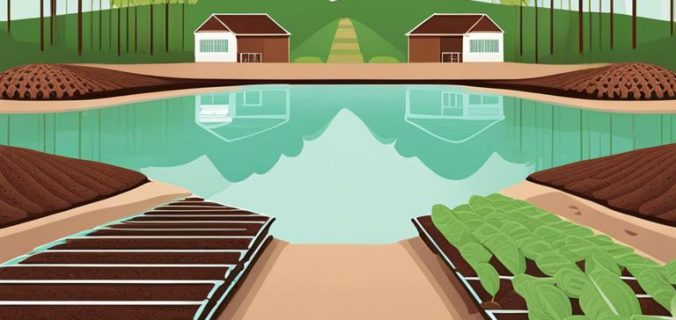With the increasing concern over water scarcity and sustainability practices in agriculture, it is crucial to explore eco-friendly methods for growing cacao beans. This informative article explores into the importance of water conservation in cacao cultivation, highlighting environmentally conscious approaches that can help preserve our precious water resources while supporting the growth of this beloved crop.
Key Takeaways:
- Agroforestry: Implementing agroforestry practices can help conserve water and create a sustainable environment for growing cacao beans.
- Shade-Grown Cacao: Opting for shade-grown cacao allows for natural water retention in the soil and reduces water consumption during the cultivation process.
- Water Recycling: Developing water recycling systems in cacao farms aids in the conservation of water resources, promoting eco-friendly methods in cacao production.

Cacao Bean Cultivation and Water Conservation
Irrigation Systems for Efficient Water Use
One of the key factors in water conservation in cacao bean cultivation is the efficient use of irrigation systems. By implementing drip irrigation or micro-sprinklers, farmers can target specific areas and deliver precise and adequate amounts of water directly to the roots of the cacao trees, minimizing water waste.
Mulching and Cover Cropping for Soil Moisture Retention
One effective method for conserving water in cacao bean cultivation is through mulching and cover cropping. These practices help retain soil moisture by reducing evaporation, suppressing weed growth, and improving soil structure. Organic materials such as cocoa husks or plant debris can be used as mulch to keep the soil hydrated.
The use of mulching and cover cropping not only conserves water but also enhances soil health by promoting biodiversity and nutrient cycling. Cover crops like legumes can also fix nitrogen in the soil, reducing the need for synthetic fertilizers and further contributing to sustainable cacao farming practices.
Eco-Friendly Farming Practices
It Agroforestry in Cocoa Brings Sustainable Production:
Shade-Grown Cacao for Reduced Evapotranspiration
Practices like shade-grown cacao help reduce evapotranspiration, the process by which plants release water vapor. By providing shade to the cacao trees, the rate of water loss is decreased, promoting water conservation in the ecosystem.
Organic Fertilizers and Pest Control Methods
ShadeGrown cacao farms often utilize organic fertilizers and pest control methods. These natural alternatives not only nourish the soil but also protect local wildlife and water sources from harmful chemicals.
For instance, farmers may use compost and manure as natural fertilizers, which enrich the soil with imperative nutrients and promote healthy cacao growth. Additionally, methods like introducing beneficial insects or using plant-based repellents help control pests without harming the environment.
Water Harvesting and Storage Techniques
Rainwater Collection Systems for Cacao Farms
All cacao farms can benefit from rainwater collection systems. With the ability to capture and store rainwater, cacao farmers can reduce their dependency on freshwater sources, leading to a more sustainable and eco-friendly operation.
Efficient Storage Solutions for Collected Water
Implementing proper storage solutions is crucial for maximizing the benefits of collected rainwater. Systems such as rain barrels or underground cisterns can ensure that water is available during dry spells, reducing the farm’s overall water footprint.
Plus, by utilizing efficient storage solutions, cacao farmers can mitigate the impacts of droughts and unpredictable weather patterns, safeguarding their crops and livelihoods.
To wrap up
Considering all points, it is evident that implementing eco-friendly methods for growing cacao, such as shading with banana plants, mulching with organic matter, and using water-efficient irrigation techniques, can significantly contribute to water conservation efforts. By adopting these sustainable practices in cacao farming, we not only protect our precious water resources but also promote biodiversity and ensure the long-term productivity of cacao crops for future generations.
FAQ
Q: Why is water conservation important in growing cacao beans?
A: Water conservation is crucial in growing cacao beans to ensure sustainable practices and protect our environment. By using eco-friendly methods, such as drip irrigation systems and rainwater harvesting, we can minimize water wastage and reduce the negative impact on local water sources.
Q: What are some eco-friendly methods for conserving water in cacao bean cultivation?
A: There are several eco-friendly methods for conserving water in cacao bean cultivation. These include implementing drip irrigation systems to deliver water directly to the roots of the plants, using mulch to retain soil moisture, and practicing rainwater harvesting to capture and store rainwater for irrigation purposes.
Q: How can farmers benefit from using eco-friendly water conservation methods in growing cacao beans?
A: Farmers can benefit in various ways from using eco-friendly water conservation methods in growing cacao beans. These methods can help reduce water usage and costs, improve soil health and plant growth, and contribute to the sustainability of cacao farming operations. Additionally, by adopting these practices, farmers can enhance the overall quality and yield of their cacao beans.

